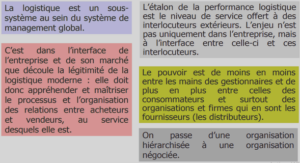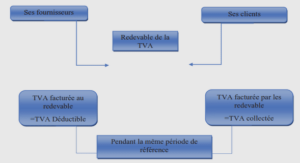Cognitive concepts related to pain modulation
As previously mentioned, cognitive, emotional, and psychophysiological factors modulate pain and the nociceptive process. Empirical evidence illustrates the role of cognitive functions, mainly attention, in pain processing. The main model utilized in my doctoral work is the « neurocognitive model of attention to pain » (Le grain et al., 2009) . This theory explains how bottom-up capture of attention and top-down modulation interact with WM to modulate pain perception. The « neurocognitive model of attention to pain » was developed based on previous models inc1uding the model of « limited attentional capacity/resource theory » (McCaul et al., 1985) , « the cognitive-affective model of the disturbing effect of pain » (Ecc1eston et al., 1999a) , and the « motivational account of attention to pain » (Van Damme et al., 201 Ob) that explain how pain interacts with attention and vice versa .
Before explaining « the neurocognitive model of attention to pain » and other related models, it is necessary to introduce separate, fundamental concepts of those theories including selective attention , « the attention system of the human brain » , bottom-up vs. top-down attentional processes , and working memory . In addition, different types of attentional processes might modify pain and nociceptive processes by affecting different cortical mechanisms (Raz et al., 2006; Torta et al., 2017a). The next section reviews sorne fundamental concepts and models of attention to clarify how and why sorne stimuli can be selected while others are ignored.
Selective attention
William James defined the concept of attention as choosing one stimulus out of several for conscious processing (James, 1890). Regarding this view, selective attention – one of the terms most commonly used to refer to attention – is considered a filter that prioritizes the processing of relevant information (Broadbent, 1958; Hommel, 2010; James, 1890). Selecting relevant information is critical for our limited cognitive capacity because it is impossible to process aIl available information simultaneously (Broadbent, 1958; Kahneman et al., 1984). In addition to James’ view, Alan Allport also defined attention as a system that can prioritize and select the most relevant action (AIl port, 1989). He considered two different functions of an efficient attentional system: first, attention protects the ongoing behavior (cuITent goals) from distractors; second, ongoing behavior can be disturbed wh en critical demands (such as threats) appear unpredictably (Allport, 1989; Norman et al., 1986; Van Damme et al., 2010b). Maintaining the balance between these functions is required for survival; shifting to new information too frequently can lead to chaotic behavior, while ignoring environmental threats is potentially hazardous (Allport, 1989; Fishbach, 2007; Van Damme et al., 2010b). For example, in the context of a painful situation, selecting painful stimuli can interrupt ongoing actions in order to prioritize escape or defensive behavior (Torta et al., 2017a; Van Damme et al., 201Ob; Van Ryckeghem et al., 2018). In surnmary, according to these two views selective attention prioritizes relevant information and selects the most appropriate action to achieve ongoing goals.
The attention system of the human brain
Posner and Petersen proposed three distinct processes of attentional system, along with three related brain are as and networks (Petersen et al., 2012; Posner, 1989; Posner, 2016). The first stage is referred to as an alerting process that makes us aware of the overall sensory feeling our attention being captured and that activates the right hemisphere, particularly the thalamic, frontal, and parietal areas (Fan et al., 2005; Fan et al., 2002; Petersen et al., 2012; Posner et al., 1990). The second stage is referred to an orienting process that selects the modality or location of the sensory input for further processing (Petersen et al., 2012; Posner et al., 1990). For example, ifwe cue the location ofa target, it will orient our attention to this location. Orientation can occur either overtly, with eye movement, or covertly, without eye movement (Posner, 2016). The orienting network activates the parietal and frontal areas: activation of the superior parietal lobe is associated with following cues; activation of the temporal-parietal junction is related to the disengagement of attention and guidance to a new location; and activation of the frontal areas is associated with quick attentional control (Ollinger et al., 2000; Petersen et al., 2012; Posner, 2016; Posner et al. , 1990). The third attention stage is called the executive attention process, which detects relevant targets and resolves the conflict between choosing relevant stimuli and ignoring irrelevant stimuli (Petersen et al., 2012; Posner et al., 1990; Torta et al., 2017a). Neuroimaging studies indicate that monitoring conflict activates the dorsal ACC while resolving a conflict activates the DLPFC (Bush et al., 2000; Fan et al., 2005; Posner, 2016). The concept of executive attention in the Posner and Petersen model overlaps with executive functions (i.e. attentional control, cognitive inhibition, and WM processes are involved in executive functions, which implies that these cognitive processes are essential for cognitive control and achievement of selected goals) (Chan et al., 2008; Diamond, 2013). In addition, executive attention clearly overlaps with the concept of selective attention (i.e. prioritizes relevant information and selects the best action, as mentioned previously) (Torta et al., 2017a). However, in the Petersen and Posner model executive attention is considered a process that helps us to maintain cognitive control mainly over irrelevant information. In addition, in this model, each stage is associated with activity in specific brain networks (Dosenbach et al., 2007; Dosenbach et al., 2006; Posner et al., 2007; Torta et al., 2017a) .
Chapter 1. Introduction |






